Why Your VoIP Phone Dies When the Power Goes Out - But Your Landline Doesn’t
If you’ve ever been stuck without phone service during a power outage, you’ve felt the difference between VoIP and landlines. One keeps working. The other goes silent. It’s not a glitch. It’s design.
Traditional landline phones don’t need your home or office electricity to work. They run on power sent through the phone line itself - straight from the phone company’s central office. Even when your lights are out, your landline still rings. VoIP phones? They’re completely dependent on your local power. No electricity? No call. No internet? No call. That’s not a flaw - it’s how the technology works.
How Landlines Get Power (Without Your Outlet)
Landline phones are analog. They send your voice as a continuous electrical signal - like an old radio wave - over copper wires. That signal doesn’t need your wall outlet. Instead, the phone company sends 48 volts of direct current down the line from their central office. This power runs the phone’s tiny speaker, microphone, and dial tone circuit. It’s enough to keep things going, even during a blackout.
Here’s the kicker: landlines only draw power when you’re actually on a call. When you hang up, they use almost nothing. That’s why they’re so reliable in emergencies. During Hurricane Sandy in 2012, landlines were one of the few communication tools that still worked in flooded areas. Cellular towers failed. Internet went down. But landlines? Still ringing.
Why VoIP Needs Your Wall Socket
Voice over Internet Protocol - VoIP - turns your voice into digital data. That data gets packaged, sent over your internet connection, and then unpacked on the other end. That process? It takes power. A lot of it.
Your VoIP phone needs electricity for:
- Digital signal processing (converting sound to data packets)
- Running the network chip (Ethernet connection)
- Powering the screen (even basic ones use 1-2 watts)
- Keeping the phone connected to your router or switch
- Running extra features like speakerphone, call waiting, or voicemail-to-email
Unlike landlines, VoIP phones are always on. Even when you’re not talking, they’re sitting there, waiting for a call, syncing with your network, and staying ready. That’s why an old VoIP phone could use up to 10 watts continuously - about the same as a desktop computer running 40 hours a week, but running 24/7.
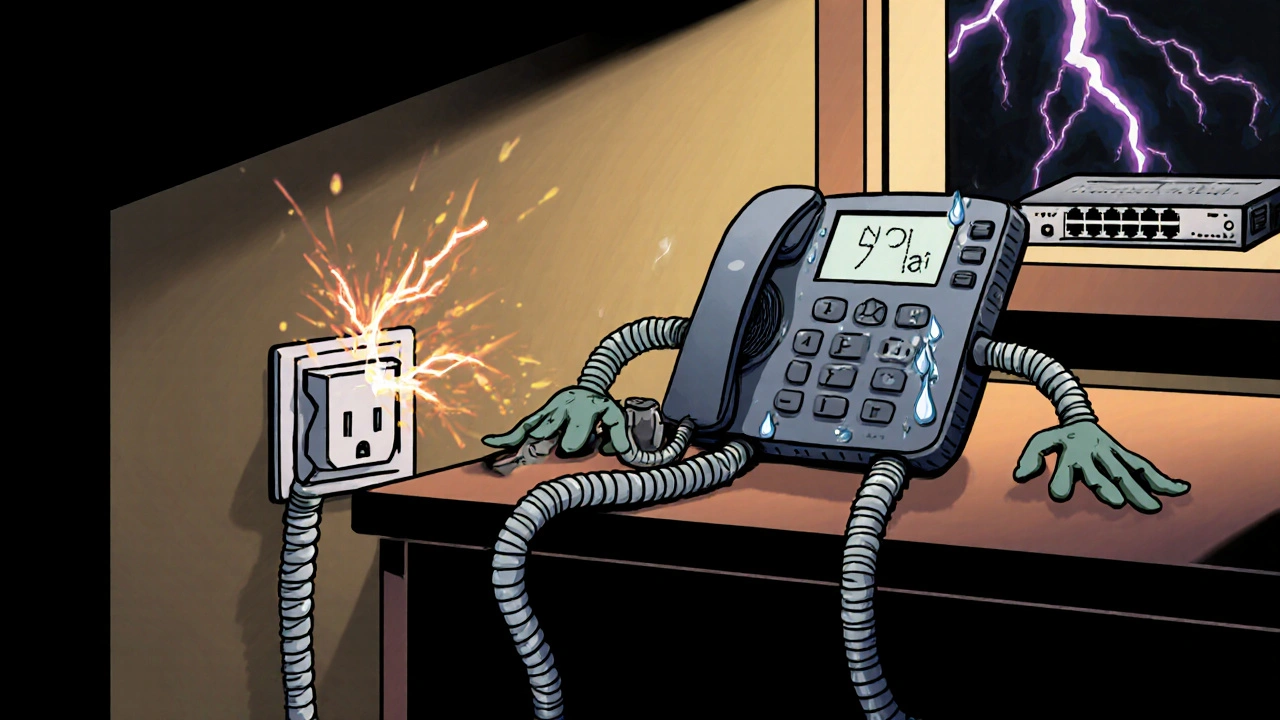
Power over Ethernet (PoE): A Double-Edged Sword
Many businesses use Power over Ethernet (PoE) to simplify VoIP setup. Instead of plugging each phone into a wall outlet, you run one Ethernet cable that carries both data and power. It looks neat. It’s easier to install. But here’s the catch: PoE still needs electricity.
PoE comes in two main types:
- Standard PoE (802.3af): Delivers up to 15.4 watts - enough for most basic VoIP phones.
- PoE+ (802.3at): Delivers up to 30 watts - for phones with big screens, video calling, or advanced features.
Most business VoIP phones use between 4 and 7 watts. That sounds low. But multiply that by 20 phones in your office? That’s 100-140 watts just for phones. Add in the network switch that powers them all? Now you’re looking at 200-300 watts running nonstop. That’s a small fridge’s worth of power - every hour, every day, every year.
The Hidden Cost: Energy Bills and Backup Needs
Most companies don’t realize how much their VoIP system costs to run. ENERGY STAR found that certified VoIP phones use 40% less power than older models - thanks to smarter power management. These phones can go into low-power mode when idle, or shut down completely after hours.
But if you’re still using old phones? You’re wasting money. One IT manager in Madison reported his company’s monthly power bill jumped $85 after switching to 15 VoIP phones - all because they didn’t upgrade to ENERGY STAR models.
And backup? That’s the real blind spot. If your power goes out and your VoIP system has no UPS (uninterruptible power supply), your entire phone system dies. One business lost 4 hours of customer service during a storm because they didn’t plan for backup power. They had 120 VoIP phones. Zero worked. Their landline? Still ringing.
Why This Matters for Your Business
Switching from landlines to VoIP isn’t just about saving on monthly bills. It’s about changing how your business survives disruptions. Landlines are analog. Simple. Reliable. Independent of your local power grid.
VoIP is digital. Flexible. Feature-rich. But it’s tied to your electricity, your router, your internet provider - and if any of those fail, you’re silent.
If you’re running a small business, clinic, or home office, you need to ask: What happens if the power goes out? Can you still take emergency calls? Can your customers reach you? If the answer isn’t a clear yes, you’re at risk.
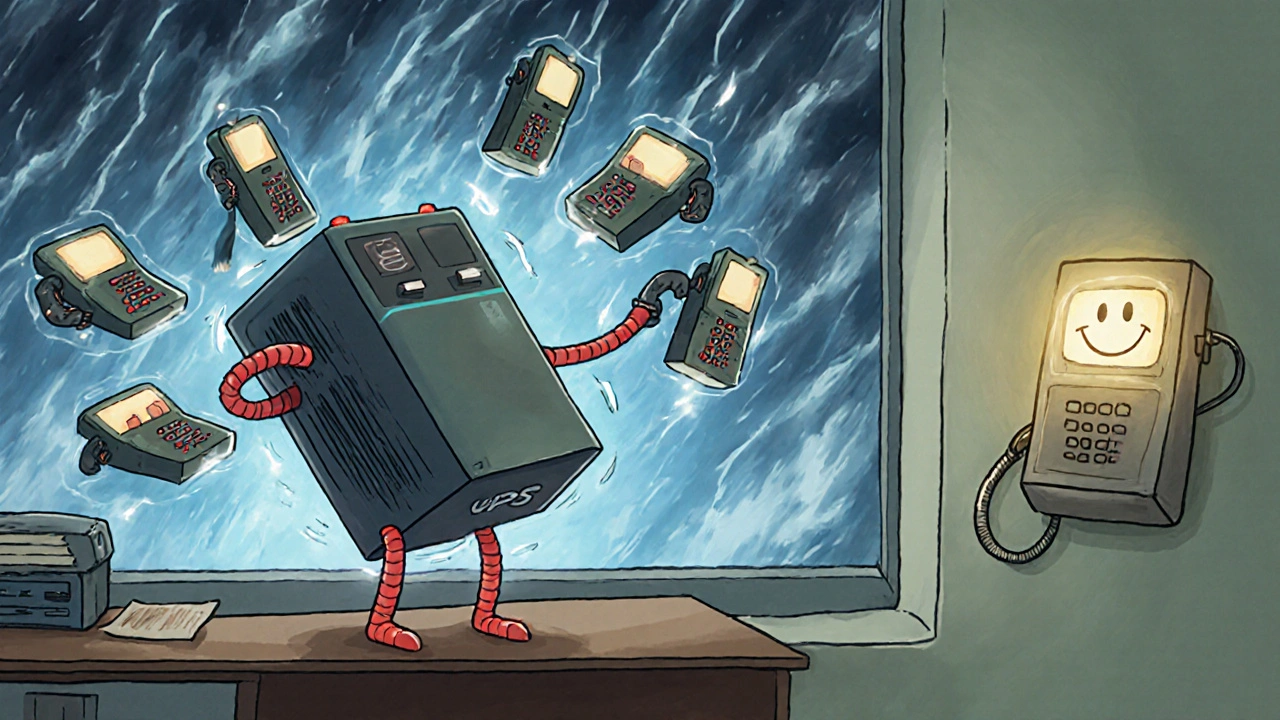
What You Can Do Today
You don’t have to go back to landlines. But you do need to plan for power.
- Upgrade to ENERGY STAR certified VoIP phones - they cut power use by 40% and often include auto-sleep modes.
- Use PoE switches with built-in battery backup - or plug your main network switch into a UPS.
- Size your UPS properly - don’t guess. Calculate total power draw of all VoIP phones, the switch, and router. Add 20% buffer.
- Keep at least one analog phone as backup - even one landline connected to a basic wall jack can save your business during a crisis.
- Test your setup - flip the breaker once a year. See what stays on. See what dies.
The world is moving to VoIP. It’s faster, cheaper, and smarter. But that doesn’t mean it’s foolproof. Understanding its power needs isn’t a technical detail - it’s a survival tactic.
Frequently Asked Questions
Do VoIP phones work during a power outage?
No, standard VoIP phones don’t work during a power outage unless they’re connected to a backup power source like a UPS. Unlike landlines, which get power from the phone company’s line, VoIP phones rely on your local electricity to run their processors, network chips, and displays.
Can I use a battery backup for my VoIP system?
Yes, and you should. A UPS (uninterruptible power supply) can keep your VoIP phones, router, and network switch running during a blackout. For a small office with 10 phones, a 1,000-1,500VA UPS will typically give you 4-6 hours of backup. Make sure to size it for your total power draw - not just the phones, but the switch too.
Is Power over Ethernet (PoE) safer or more reliable than using wall adapters?
PoE isn’t safer - it’s just more convenient. It reduces cable clutter and makes installation easier. But it doesn’t change the fact that your phones still need electricity. If your PoE switch loses power, your phones go down. The real advantage comes when you back up the PoE switch with a UPS - then you get clean, centralized power management.
Why do landlines still work when cell towers fail?
Landlines use copper wires connected directly to the phone company’s central office, which has its own backup generators and battery systems. Cell towers rely on local power and batteries that last only a few hours. When the grid goes down, cell towers often lose power before landlines do. That’s why landlines were the only reliable communication during major storms and disasters.
Should I keep a landline phone if I use VoIP?
If your business depends on being reachable during emergencies - like a medical office, daycare, or small retail shop - yes. One analog phone plugged into a basic wall jack costs less than $30 and can be your lifeline during power outages, internet failures, or network crashes. It’s cheap insurance.
How much power does a typical VoIP phone use?
A basic VoIP phone uses 4-7 watts. Phones with color screens or video calling can use up to 10-12 watts. Multiply that by 10 phones? That’s 40-120 watts running 24/7. Over a year, that’s 350-1,000 kWh - enough to run a refrigerator. ENERGY STAR-certified models cut that by 40%.
What Comes Next
The future of business communication is digital. But digital doesn’t mean invincible. As more companies move to VoIP, the need for smart power planning will only grow. Look for phones with better sleep modes. Ask your vendor about PoE efficiency. Plan for backup. Don’t assume your internet provider will keep your phone running when the grid fails.
VoIP gives you features landlines never could. But it also demands responsibility. Treat your phone system like your electricity - don’t ignore it until it’s too late.


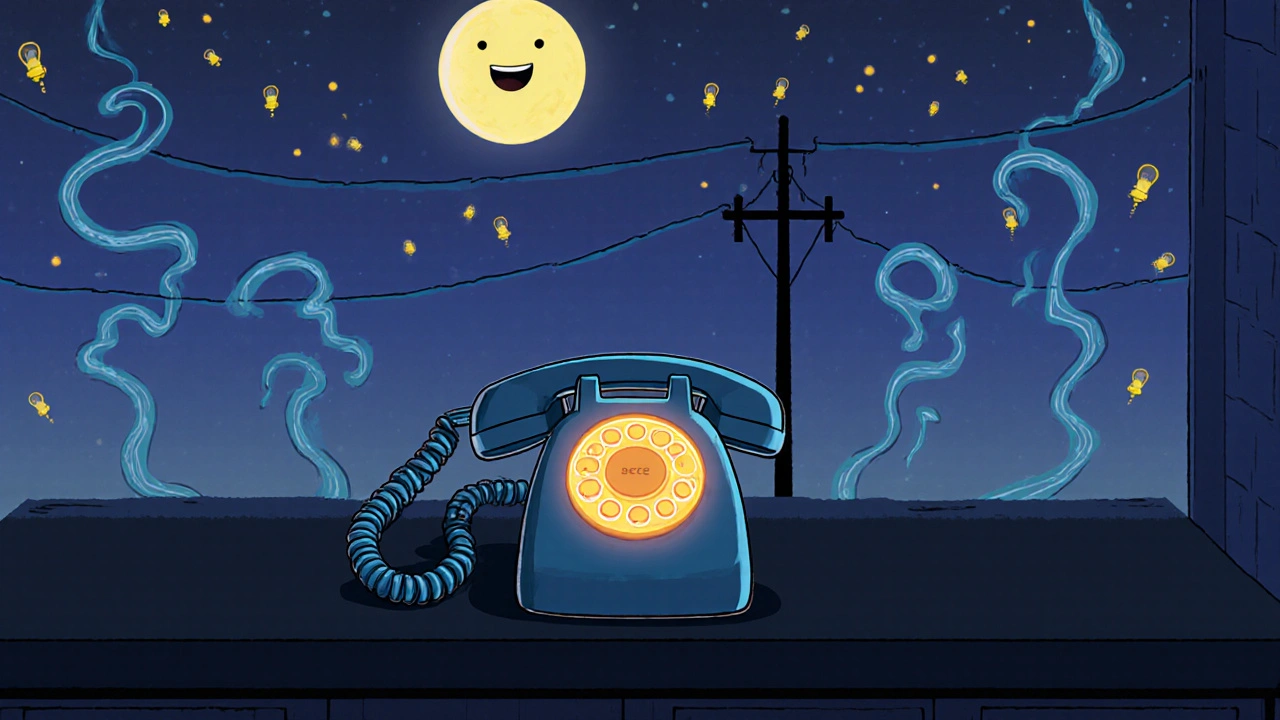


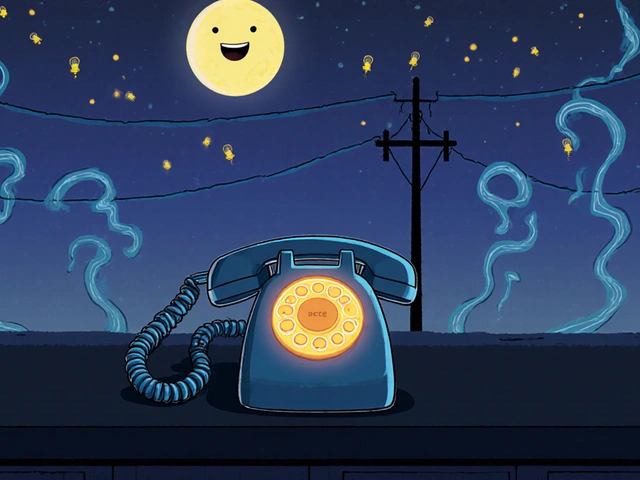

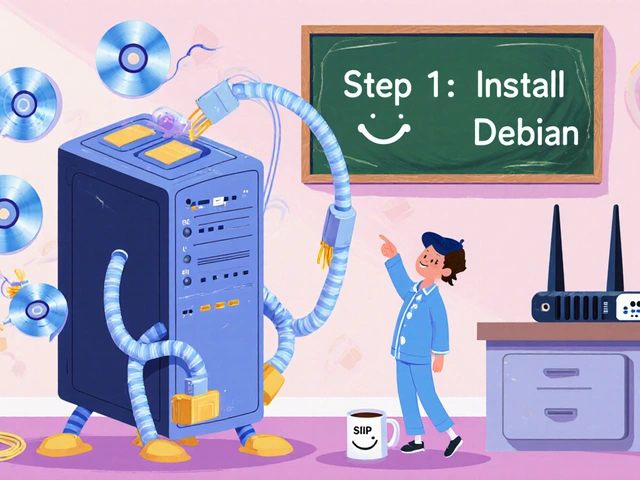


Mongezi Mkhwanazi
5 Nov 2025 at 19:24Oh, for heaven’s sake-another person who thinks VoIP is just ‘tech magic’ that works like a fairy tale? Let me spell it out for you, in case your eyes glazed over the 1,200-word essay: landlines work because they’re analog relics from a time when engineers actually built things to last-not to be replaced every three years because some startup decided ‘cloud’ was a buzzword worth betting the company on. VoIP? It’s a house of cards made of routers, switches, power strips, and hope. And when the power goes out? Poof. Gone. Like your internet provider’s customer service line. I’ve seen businesses collapse during storms because they trusted their phones to a $20 plug-in adapter and a router that blinked ‘connected’ even when the cable was severed. You want reliability? Keep the landline. Not as a backup. As a lifeline. And yes-I’m serious. This isn’t nostalgia. It’s survival.